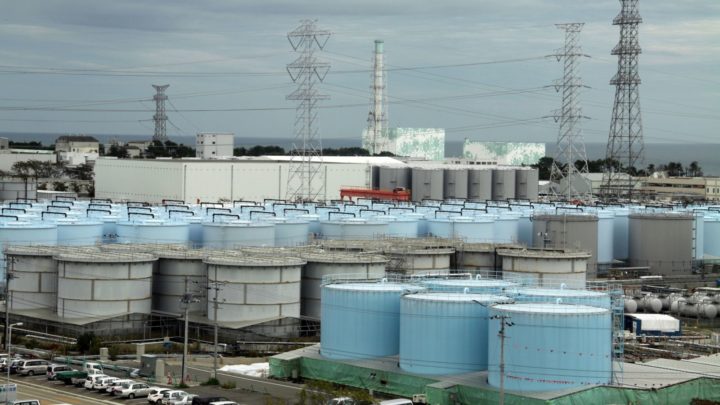Contaminated wastewater at the Fukushima Dai-ichi nuclear plant will be released into the ocean “in around two years,” the Japanese government has announced, despite calls from China and South Korea urging against the move.
Japanese Prime Minister Yoshihide Suga announced the move in Tokyo, on Tuesday. He had previously called the release “unavoidable” given the amount of accumulated water over the past decade.
The Dai-ichi nuclear power plant in the Fukushima prefecture suffered a meltdown after being struck by a 9.0 magnitude earthquake and a 15-meter tsunami in March 2011. It was the worst nuclear disaster since the 1986 Chernobyl accident in the USSR.
The wastewater contaminated with tritium – the radioactive isotope of hydrogen – that has since accumulated inside the complex will be diluted and released into the ocean, the Japanese national broadcaster NHK reported, citing government officials.
Earlier this week, China warned Japan “the international community is watching” and called on Tokyo to “fulfill [its] international responsibilities” when it came to the environment.
A spokesperson for the South Korean Foreign Ministry said that releasing the water would “directly and indirectly affect the safety of the people and the neighboring environment” and that it would be “difficult to accept” if Japan makes the decision without “sufficient consultation” with its neighbors.
The accumulated tritiated water is a byproduct of the authorities attempting to cool the melted nuclear fuel of the plant’s reactor core over the past 10 years. A 2013 Japanese government study concluded that there is no “no practical separation technology on an industrial scale” to treat the wastewater, and recommended “controlled environmental release” as the solution.
There are more than 1.25 million tons of the tritiated water in the storage tanks at the Fukushima Dai-ichi complex. Its operator, Tokyo Electric Power Company (TEPCO) Holdings, expects to run out of storage space as early as fall 2022. The tritiated water has already been treated in a process that removes other radioactive materials, including the highly toxic strontium and cesium, TEPCO said.
The International Atomic Energy Agency (IAEA) has not objected to Japan’s plan to release the wastewater, saying it “meets global standards” of nuclear industry practices. During a video conference with IAEA Director General Rafael Grossi last month, Japanese industry minister Hiroshi Kajiyama asked the agency to conduct “a scientific and objective review” of the water disposal and “openly convey its view to the international community,” according to the Mainichi Shimbun.
Currently, Japan houses radioactive wastewater in more than 1,000 tanks, but with 170 additional tons of the radioactive by-product being produced every day, storage space is quickly running out.
It is estimated that all tanks will have reached maximum capacity by the summer of 2022 and Japanese Chief Cabinet Secretary Katsunobu Kato said on Friday that the decision was one they could “not keep delaying,” Kyodo News reported.
The water is used to cool the Fukushima nuclear reactor core, which went into meltdown.
The government previously considered building more tanks to house the additional water, or attempting to evaporate the water into the atmosphere, but an advisory panel recommended releasing it into the ocean as the most efficient solution. However, the release process is not expected to begin until 2022 and is likely to take 30 years to complete.
The prospect of an ocean release has reignited concerns among local fishermen who fear it could destroy their industry.
“We are terrified that if even one fish is found to have exceeded the [radiation] safety standards after the treated water is released, people’s trust in us will plummet,” Kyodo News quoted a local fisherman as saying.
Hiroshi Kishi, who heads a confederation of Japanese fishing cooperatives told officials that the release could have a “catastrophic impact” on the industry.
Fishing was completely halted following the 2011 disaster, and despite a recent recovery, fishermen in the region continue to face international trade restrictions. South Korea, which still bans all fish imports from the region, has described the proposal as a “grave threat.”
The initial meltdown in 2011 forced the evacuation of 150,000 people from within 20km of the plant as well as from outside areas that experienced high levels of fallout. The clean-up process is expected to take many more years to complete.






